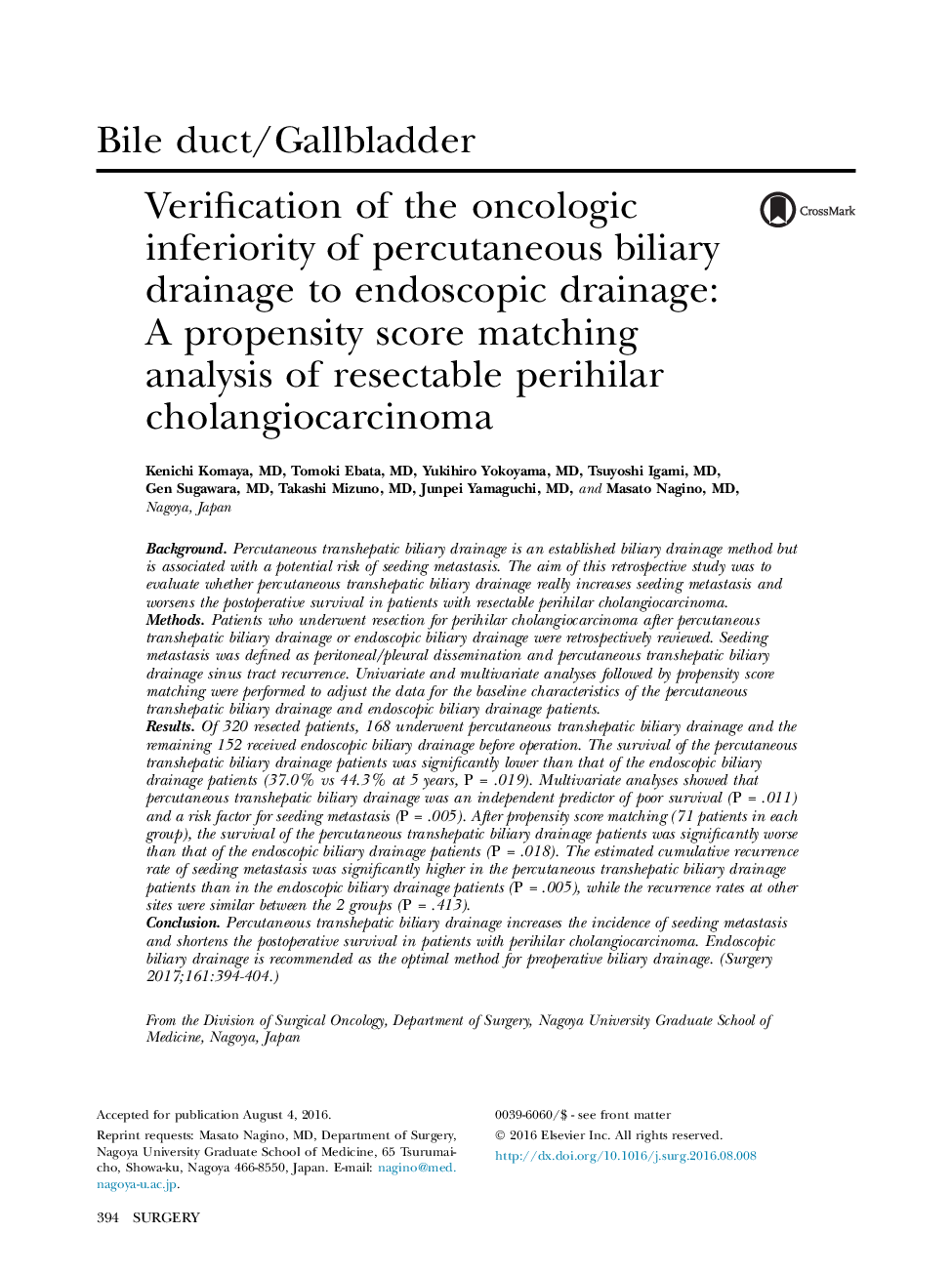| Article ID | Journal | Published Year | Pages | File Type |
|---|---|---|---|---|
| 5734451 | Surgery | 2017 | 11 Pages |
BackgroundPercutaneous transhepatic biliary drainage is an established biliary drainage method but is associated with a potential risk of seeding metastasis. The aim of this retrospective study was to evaluate whether percutaneous transhepatic biliary drainage really increases seeding metastasis and worsens the postoperative survival in patients with resectable perihilar cholangiocarcinoma.MethodsPatients who underwent resection for perihilar cholangiocarcinoma after percutaneous transhepatic biliary drainage or endoscopic biliary drainage were retrospectively reviewed. Seeding metastasis was defined as peritoneal/pleural dissemination and percutaneous transhepatic biliary drainage sinus tract recurrence. Univariate and multivariate analyses followed by propensity score matching were performed to adjust the data for the baseline characteristics of the percutaneous transhepatic biliary drainage and endoscopic biliary drainage patients.ResultsOf 320 resected patients, 168 underwent percutaneous transhepatic biliary drainage and the remaining 152 received endoscopic biliary drainage before operation. The survival of the percutaneous transhepatic biliary drainage patients was significantly lower than that of the endoscopic biliary drainage patients (37.0% vs 44.3% at 5Â years, PÂ =Â .019). Multivariate analyses showed that percutaneous transhepatic biliary drainage was an independent predictor of poor survival (PÂ =Â .011) and a risk factor for seeding metastasis (PÂ =Â .005). After propensity score matching (71 patients in each group), the survival of the percutaneous transhepatic biliary drainage patients was significantly worse than that of the endoscopic biliary drainage patients (PÂ =Â .018). The estimated cumulative recurrence rate of seeding metastasis was significantly higher in the percutaneous transhepatic biliary drainage patients than in the endoscopic biliary drainage patients (PÂ =Â .005), while the recurrence rates at other sites were similar between the 2 groups (PÂ =Â .413).ConclusionPercutaneous transhepatic biliary drainage increases the incidence of seeding metastasis and shortens the postoperative survival in patients with perihilar cholangiocarcinoma. Endoscopic biliary drainage is recommended as the optimal method for preoperative biliary drainage.
